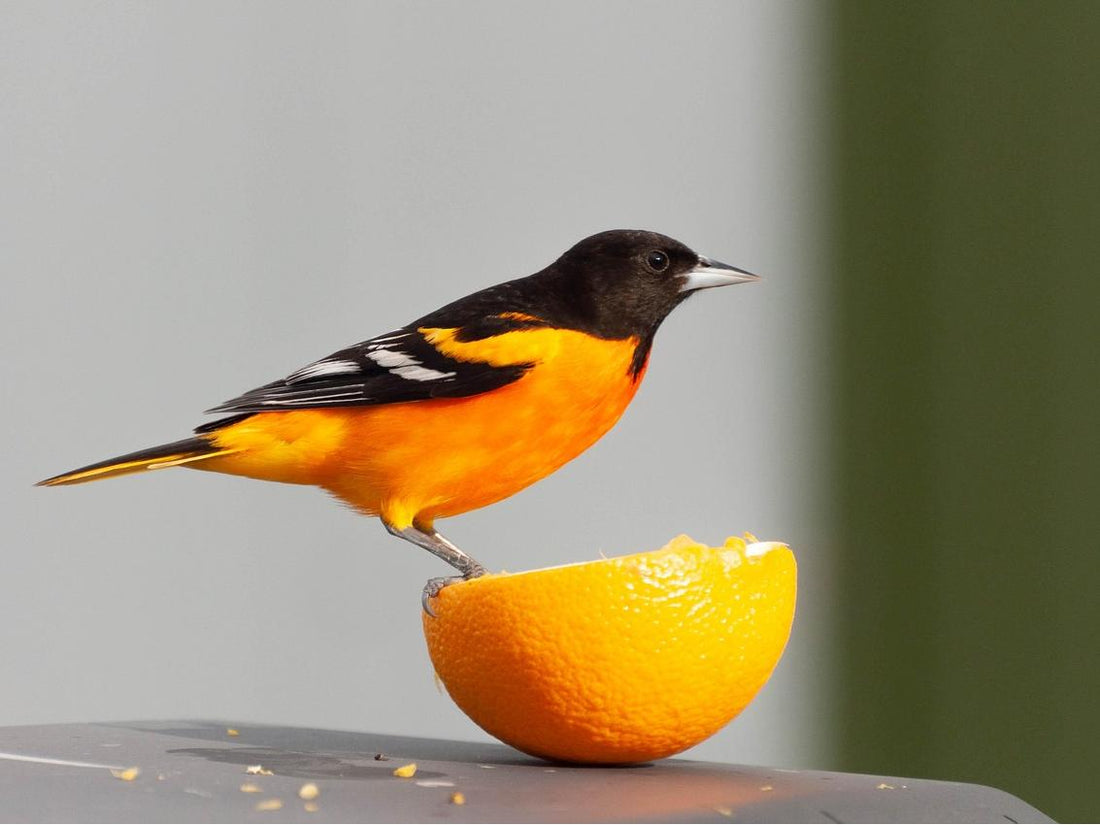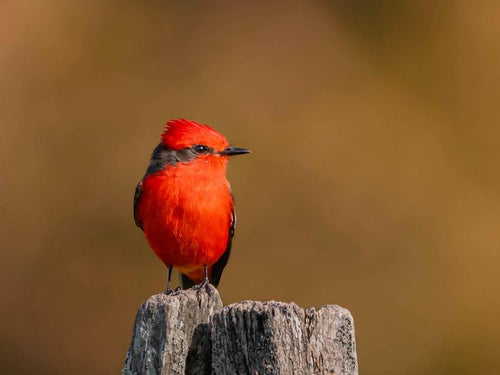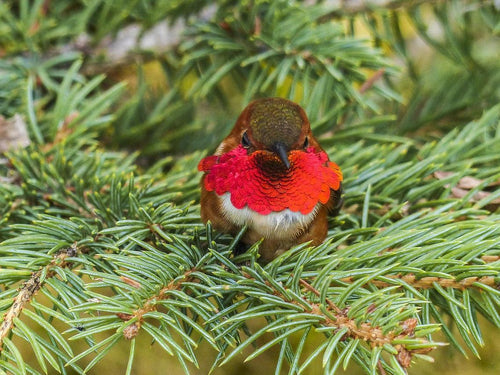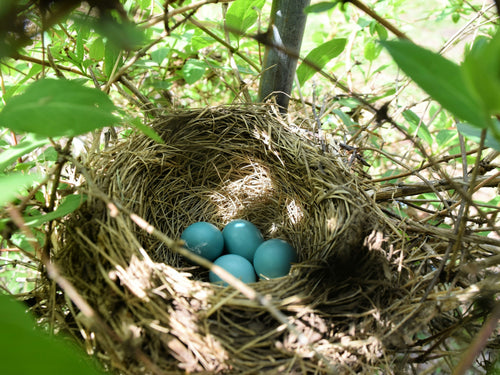Orange Birds in North America: Where and When to Spot Them
TTNatureTeam
Have you ever been outside in your backyard and suddenly seen a flash of orange zipping past, only to wonder what type of bird you just saw? You are not the only one!
In North America, we have some of the best orange-feathered birds. Regardless if you are an avid bird watcher or simply someone that enjoys looking out the window from time to time, this guide will help you identify orange birds. We will explain when and where you can find them and explain other characteristics about these birds as well, starting with the most simple question: why are these birds orange in the first place?
Why Are Some Birds Orange?
You may be asking why some birds developed bright colors. The short answer is, diet and reproduction. Orange feathers get their color from carotenoid pigments that birds poach from their diets, such as bright colored fruits, some berries, and even beetles and other bugs!
But as you may have guessed, it is not just about having pretty feathers. Those bright orange feathers can do several important things. Male birds will attempt to attract a female bird during the breeding season by the feathers in addition to displaying their own health and fitness. The greater orange significance, the greater the diet of the bird, the better the chances of finding a capable partner.
Orange color is also used for communication with other birds of the same species.
Common Orange Birds in North America
A few common orange birds that we can see in North America today include:
1. Baltimore Oriole
If you live in the eastern or central United States, you've got a good chance of seeing these beauties during spring and summer. Males are absolutely stunning with their bright orange bodies and black heads. They love tall trees and are surprisingly fond of grape jelly if you want to try attracting them to your yard.
2. Bullock's Oriole
These are the western cousins of Baltimore Orioles. You'll find them throughout the western states during their breeding season from spring through summer. The males have gorgeous orange and black patterns that are slightly different from their eastern relatives.
3. American Robin
You may be thinking "robins aren't orange," but look closely at their breasts. Their warm reddish-orange chest is unmistakable, and unlike most other orange species, robins are human-friendly orange birds that are around in many areas year-round. Robins are probably the orange bird that you will see the most.
4. Varied Thrush
You can easily find these stunning birds near the Pacific Northwest region. Especially during winter time. They may look a little bit like robins but you can easily recognize them by their orange stripe eyebrows and wing bars.
5. Western Tanager

This species is a summer resident of the western forests and the males have orange-red heads that seem to glow in the dappled light. They like mountainous areas with tall, tall trees.
6. Altamira Oriole
If you happen to live in South Texas, you could see these large and spectacular orioles year-round. They are less seen than other orioles, but definitely take the time to watch.
7. Rufous Hummingbird

The males have beautiful orange-red throats that catch the light wonderfully. You are most likely to see them in spring and fall migrations along the Pacific coast. They move incredibly fast so keep your eyes open!
Best Times of Year to Watch for Orange Birds
For birdwatching, timing is everything. To see orange birds you need to know when to look. So, here are the best times of the year for watching these species:
1. April-June
Spring is the best time to see orange birds. From April through June, these birds are at their absolute peak - both in terms of color and activity. This is the time they try to find a mate, hence showing off their orange feathers. This makes it easier to spot them.
Get up early during this time of year. These birds tend to fly from down south during that time. Hence, they would be full of energy, singing their hearts out and claiming their territory. All this activity works in your favor as a birdwatcher.
Here's what to watch for in spring:
● Baltimore and Bullock's Orioles coming back to nest
● Western Tanagers showing up in the mountains
● Lots of activity around trees and shrubs where they might build nests
● Males looking their absolute best in bright breeding colors
2. Late Summer
Late summer is special for a different reason. This is when baby birds are leaving their nests for the first time. You might see a lot of whole families moving around together, and the young usually show real curiosity with everything.
The parent birds are incredibly busy at this time. They teach their young on how to find food and stay away from danger. This creates a lot of movement and activity during monitoring around areas in which you may be observing. The young birds are also far bolder than their parents so you can usually get quite close in order to watch them.
3. August - October
Fall migration runs from August through October, and it's another fantastic time for birdwatching. Many species that won't stay for winter are passing through, often in mixed groups. This implies you could potentially witness various forms of orange birds simultaneously.
During fall, birds have one specific purpose in mind - to eat as much as possible to sustain their journey southward. As a result, they are foraging around the clock, and you'll have more opportunities to see them every time they set off to search for food. They don't care about territory this time of year, but rather about survival.
4. Winter
Orange birds tend to migrate during the months of winter. But this doesn’t mean you put your binoculars away! Depending on your location and how mild the winters are, there is still a possibility for you to see some unique birds. American Robins, for example, will stay in your area if you don’t suffer from too harsh weather and if there is food available to them.
Another reason to continue watching for orange birds during the winter months is the potential of seeing unusual birds that may come into your back (and front) windows due to unusual weather during some winters.
Where to Spot Orange Birds?

Location is equally important as timing when it comes to birdwatching. Orange birds are generally found in forest edges and open woodlands. This is because here they will find cover when needed and open spaces for foraging. Rivers and streams are also excellent spots since many birds need water sources.
But this doesn’t mean that you go into the wild. You can also set your backyard with flowering trees and berry bushes to attract them. Apart from that you can also set up bird feeders with sweet things like fruits & nectar, or even mealworms.
Orange birds can also be spotted in urban cities in places like parks and nature preserves.
How to Make Your Yard Orange-Bird Friendly?
It isn’t difficult to create a welcoming habitat for orange birds, but it does require consideration of their needs for survival.
● Begin with native plants that fruit or produce berries. These sources of food will be completely natural and, of course, adapted to the weather climate in which you live. Many orange birds are especially drawn to shrub and tree species that produce berries.
● For orioles, you could also establish nectar feeders or simply provide fresh fruit on feeders in trays. Oranges, grape jelly, and even apple pieces are typically popular with oriole visitors.
● When building an ecosystem to attract birds, safe and quiet spaces with plenty of cover to nest are essential. So lots of bushes and mature trees and places to hide from predators are very important. The birds need to feel safe before they will consider your yard as theirs.
● Also consider water sources. A simple bird bath or small fountain, or even a shallow dish with fresh water (not in direct sunlight) may greatly enhance your yard and, therefore, be more appealing to birds. Birds also need water to drink and bathe, and the sound moving water would help attract them too.
To develop a beautiful array of visitors throughout the year, it really starts by providing a bird feeder that meets their basic needs.
Conclusion
There is undoubtedly something magical about spotting a bright orange bird. Those moments are a significant connection to the natural world and the feelings that come upon those incredible encounters between excitement and peace are truly special.
Try starting a simple journal of your sightings as the seasons change. You will discover patterns regarding, which birds arrive when, where they like to hang out, and what seems to draw their attention. Knowing those things can really elevate the level of your bird watching experience.
With every little bird friendly step we take, the better chance we have of creating a future where these beautiful orange birds continue to brighten our days.
*Visuals courtesy of free image sources





